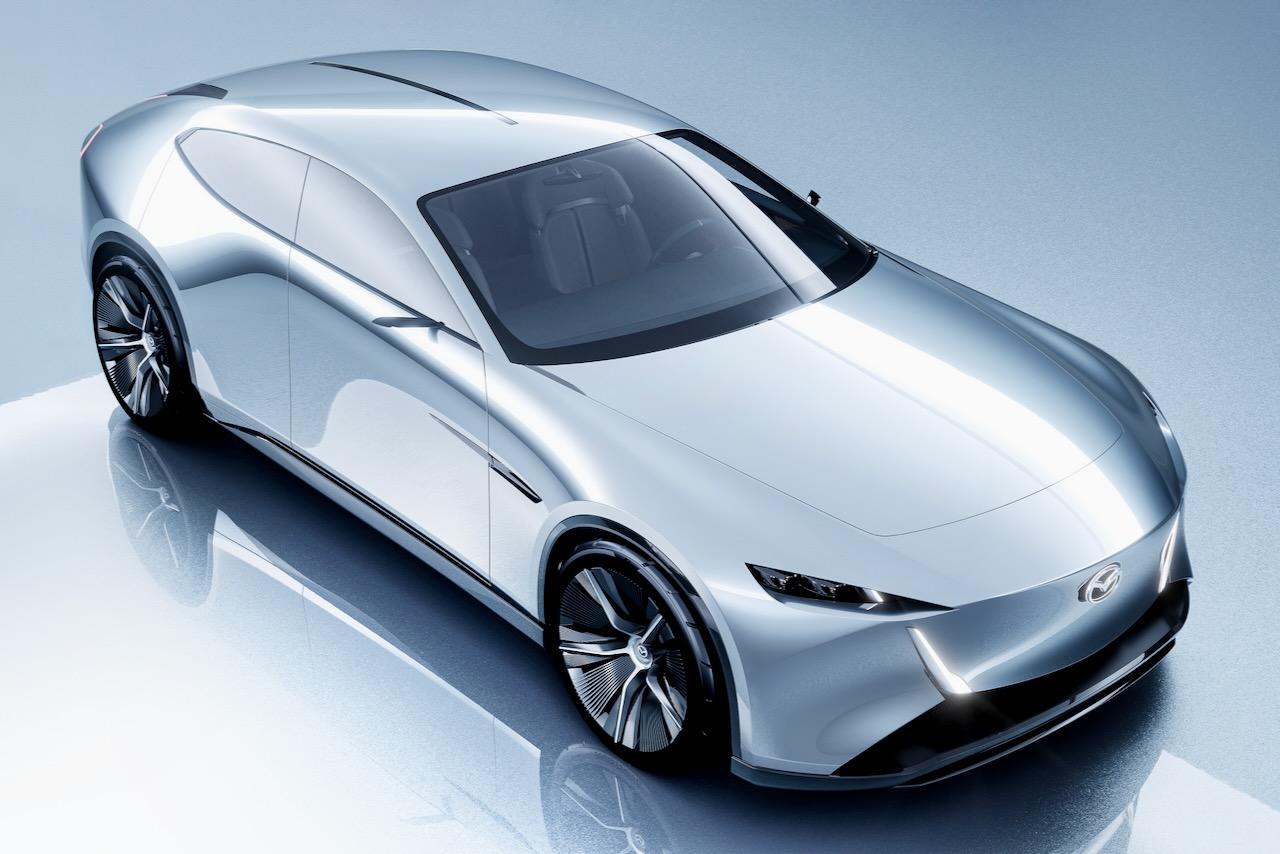Mazda’s legendary rotary engine isn’t dead yet.
Speaking with Australian journalists at the 2025 Japan Mobility Show, the company’s Chief Financial Officer, Jeff Guyton, confirmed the Japanese brand is still developing rotary technology for use in future hybrid and performance models.
The comments came as Mazda unveiled two new concept cars at the Tokyo show yesterday – the Vision X-Coupe and Vision X-Compact – both designed to preview the brand’s next-generation styling and electrified powertrains.
The X-Coupe features a twin-rotor plug-in hybrid (PHEV) powertrain, reigniting speculation that Mazda could one day deliver a new RX-badged lightweight sports coupe powered by an evolved version of its most famous engine.
CarExpert can save you thousands on a new car. Click here to get a great deal.

The sleek Mazda Iconic SP coupe concept revealed at the 2023 Tokyo show incorporated a two-rotor engine to charge an onboard battery that powered its electric motors – producing up to 285kW in a vehicle with a relatively light 1450kg target weight – but it didn’t send drive directly to the wheels.
And in June 2024, Mazda previewed a twin-rotor engine range-extender concept which it said was “being considered for use in sports cars”, after claiming rotary engines are better suited for use in range-extender applications as they can run on a wider variety of fuels than piston engines and are typically smaller, allowing more design freedom.
But unlike those setups and the rotary range-extender powertrain in the now-defunct MX-30, the rotary engine in the new Vision-X Coupe concept’s PHEV drivetrain actually powers the wheels.
“The rotary engine is part of Mazda’s soul. It’s part of the origin story of the modern Mazda Motor Corporation,” said Mr Guyton.

“The technical challenge is to make that engine suitable for current and future emissions regulations. Whether we use it as a generator, as was designed for the Iconic SP last year, or we use it as a tractive power source, as it is in this X-Coupe concept, we are steadily developing that technology.”
He said Mazda has made progress in “emissionising” the rotary for Euro 7 and US LEV IV emissions standards.
“We have a good prospect to be able to achieve that,” he added.
That opens the door for the rotary’s return beyond its current life as a small range-extender engine in the MX-30 R-EV, which was never sold in Australia. The engine’s compact size and smoothness make it ideal for hybrid packaging, particularly when paired with electric motors that can mask its lack of low-end torque.

Mr Guyton said Mazda’s engineers still see the rotary as an emotional core of the brand’s identity.
“The rotary engine has a promise because it’s lightweight, small, and if you can pair that up with an onboard generator or use it as in this car and make a plug-in hybrid out of it. It’s quite a nice piece of kit to be able to use,” he said.
While Mazda remains cautious about sports car profitability, Mr Guyton said offering a driver-focused model is still a priority for the company.
“I think this lightweight sports space is another piece of Mazda’s soul. So I don’t see that going away,” he said.
The Vision X-Coupe now picks up where previous rotary-powered Mazda RX models left off, featuring a long-bonnet and rear-wheel drive proportions but now combined with electrified hardware, suggesting Mazda hasn’t abandoned the idea of a halo rotary-powered performance model to sit above the MX-5.

For Australia, where Mazda’s range is heavily skewed toward combustion-powered SUVs, the continued development of hybrid rotary technology could be key to keeping enthusiasts engaged while the brand navigates the federal government’s New Vehicle Efficiency Standard (NVES).
Mr Guyton said Mazda’s challenge as a relatively small automaker is to invest wisely and pick its battles carefully.
“Mazda can do anything – we just can’t do everything all at once,” he said.
If the company can make the rotary clean enough to comply with emissions regulations, it might just prove there’s still room in an electrified vehicle future for one of motoring’s most distinctive engines.

